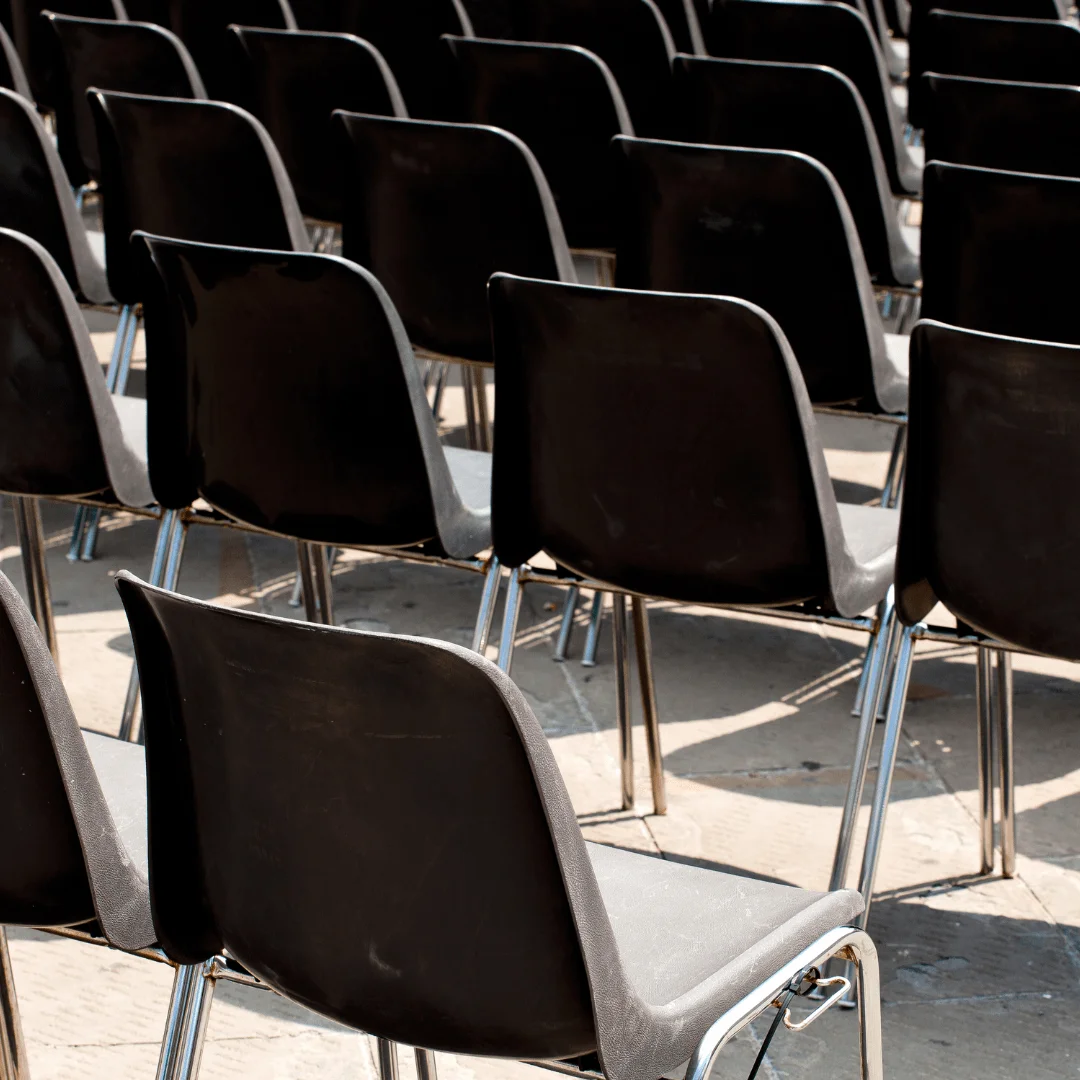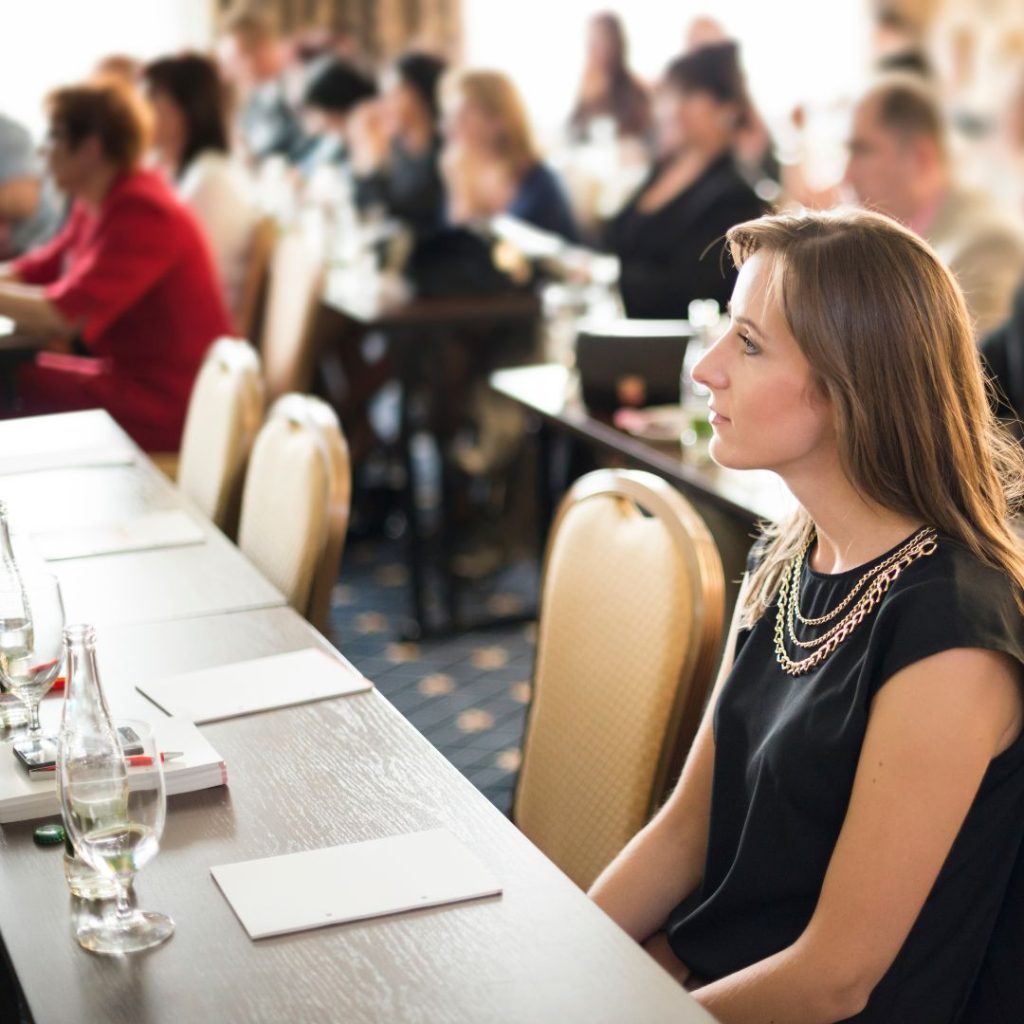From Theatre to Cocktails: Calculating the Perfect Fit for Your Event Space

Theatre Style

To calculate the room capacity of a setup in theatre style, you can use this formula:
(Room Length in Feet x Room Width in Feet) ÷ 6
This formula assumes that each person needs about 6 square feet of space.
Classroom Style

Classroom-style seating is similar to theatre-style seating but with tables added. This setup is ideal for training sessions and workshops where attendees need to take notes and participate in group discussions.
To calculate the room capacity of a room set up in a classroom style, you can use this formula:
(Room Length in Feet x Room Width in Feet) ÷ 8
This formula assumes that each person needs about 8 feet of space.
Banquet Style
Banquet-style seating is perfect for formal dinners and other events where food is served. Tables are set up in rows across the room, with chairs on either side of the table. This setup can vary depending on the size of the table and the number of chairs placed at each table. A standard round table for 6 people has a diameter of 60 inches and requires at least 10 square feet of space.
To calculate the person capacity of a room set up in banquet style with 60-inch tables, you can use this formula:
(Room Length in Feet x Room Width in Feet) ÷ 10
This formula assumes that each person needs about 10 square feet of space.
To calculate the person capacity of a room set up in banquet style with 72-inch tables, you can use this formula:
(Room Length in Feet x Room Width in Feet) ÷ 12
This formula assumes that each person needs about 12 square feet of space.

Cocktail Style

Cocktail-style seating is ideal for networking events and parties. This setup requires the least amount of space per person, as attendees don’t need to sit down. Chairs and tables are scattered throughout the room, and attendees stand and mingle with drinks and small plates. A good rule of thumb for cocktail-style events is to plan for 6-8 square feet per person.
To calculate the room capacity of a room set up in cocktail style, you can use this formula:
(Room Length in Feet x Room Width in Feet) ÷ 8
This formula assumes that each person needs about 8 square feet of space.
Now that we have determined how to calculate seating capacity, implementing a stage into your event space can add a lot of value to your event, especially if you’re planning a panel, speech, or performance. However, it’s essential to factor in the stage when calculating the capacity of the room, as it will take up a significant portion of the space.
If you’re planning an event in theatre style or classroom style, the stage with take up a substantial amount of space at the front of the room. To calculate the capacity of the room, you’ll need to deduct the square footage of the stage from the total square footage of the room. You can then use the formulas provided in this article to calculate the capacity of the remaining space.
For example, we had an event space 224 feet long by 71 feet wide and a stage 12 feet long by 32 feet wide. You’ll need to deduct the square footage of the stage from the total square footage of the room, which is (12 x 15) = 180 square feet. The remaining square footage of the room is (224 x 71) - 180 = 15,904 square feet. Using the theatre style formula provided in this post, you can calculate the capacity of the remaining space, which would be 2,650 people assuming each person needs about 6 square feet of space.
If you’re planning an event in banquet style or cocktail seating, you’ll also need to factor in the space required for the stage. However, since these seating styles are more flexible, you can adjust the layout of the tables and chairs to accommodate the stage. Be sure to consider the size of the stage and the type of event you’re hosting when making these adjustments.
For events that will have tables of suppliers, a bar, an auction, etc. around the perimeter of the space. Begin measuring 5 feet out from the wall on each wall of the space. This applies to the area near the entrance of the room, you don’t always want to measure from wall to wall, consider starting your length and width 10 - 15 feet into the room. For example, if your room is 50 x 95 feet, consider calculating for only 40 x 80 feet to ensure there is room to walk into the space.
Determining the room capacity of an event space is crucial to the success of your event. Depending on the room setup, the capacity can vary greatly. Use the formulas provided in this post to calculate the room capacity of your event space, and ensure that your guests have enough room to move around and enjoy the event. Don’t forget to consider the type of event you’re hosting, if there will be a stage or lounge, and how attendees will be using the space, and you’ll be well on your way to hosting a successful event!




